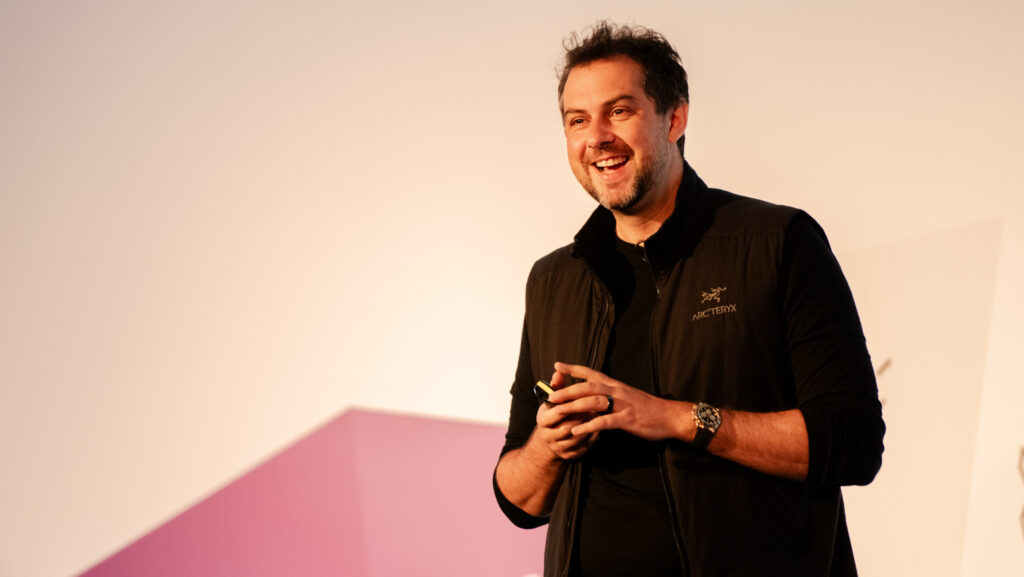Last week, the TrainingZone team travelled to Learning Technologies 2025 in London to unpack the talk of the L&D town. Across the two days, we experienced the usual LT mix – inspiration, energising conversations and helpful direction for the profession. But above all else, and perhaps unique to this year, LT2025 felt like a hard-hitting wake-up call.
AI dominated the agenda. While the same was true of last year, the focus in 2025 has shifted – from generative AI to agentic AI. Speakers including Josh Bersin, Daniel Hulme and Trish Uhl shared compelling and (often) confronting insights into its staggering implications for work, people and organisations.
Of course, other themes featured too – from accessibility and evaluation to compliance and strategic change – but it was clear that AI stole the spotlight. The message was hard to ignore: L&D must act fast.
Here, we explore three standout sessions that explored this shift in more depth.
Six AI singularities
Dr Daniel Hulme, a globally recognised AI expert and CEO at SATALIA, sent the audience on a mind-bending, whistle-stop tour of AI’s trajectory on a macro level. A particularly alarming moment was when he used the PESTLE framework to lay out six ‘AI singularities’ – points of major disruption:
- Political – A point in time when we can’t authenticate what is true
- Environmental – When we lose control of our ecosystem
- Social – When we cure death
- Technological – When AI becomes superintelligent
- Legal – When surveillance becomes uniquitous
- Economic – When we free people from jobs
Hulme argued that AI, used well, could help solve the world’s most pressing problems – freeing people from economic constraints to focus on “making the world a better place”.
Despite the keynote speaker’s optimism, some in the crowd expressed skepticism, with one audience member questioning such hopefulness given the “cruel” acts being committed by certain leaders in power today.
And Hulme openly admitted to simply not knowing. “Beyond five years, nobody knows. Three weeks ago, I would’ve said ten years.”
The rise of digital employees
Hulme also educated delegates on agentic AI: “We’re moving from AI to agents – and eventually they’ll migrate to the physical world.” We need to think of these as digital employees that, just like human employees, require the right capabilities, proper access and clear governance.
In another session, Trish Uhl, AI Trailblazer at Owl’s Ledge LLC, got into the specifics of agentic AI – its expansive capabilities, rapid speed of progress and disruptive power.
Illustrating how we move through the adoption journey, Uhl introduced her AI maturity framework: Crawl, Walk, Run and Fly.
- Crawl phase: AI is used experimentally
- Walk phase: Using tools like GenAI to improve workflows
- Run phase: Building ‘AI factories’ that augment end-to-end processes
- Fly phase: Using AI agents that are given goals, not tasks, and can independently plan, reason, and execute
To bring to life the potential here, Uhl pointed to research on “Cybernetic teammates” from Harvard Business School. This ‘field experiment’ on how AI could reshape team collaboration found that an individual using AI could outperform a whole team working on the same thing.
“Digital masters or digital disasters”?
The pace of change is breathtaking. Uhl cited Moore’s Law, Wright’s Law, scaling laws and the Martech Law to explain why AI capability is doubling every few months.
So where does L&D fit in? According to Uhl, L&D’s critical role is to help organisations and people adapt quickly.
“In this modern age of AI, are you developing digital masters or digital disasters?” she asked.
She laid out three options for L&D:
- Sink – Bury our heads in the sand and ignore it.
- Swim – Adopt AI but in a superficial way that focuses on driving efficiency and productivity.
- Swarm – Redesign work for deep AI-human collaboration that achieves better outcomes for our organisations and the world.
The future of L&D: From content delivery to “enablement”
Josh Bersin brought the focus to L&D’s future. AI-powered learning platforms, he explained, are already emerging. These systems will dynamically offer content – courses, podcasts, chatbots and videos – tailored to learners’ needs and integrated into personal AI assistants powered by large language models.
In the near future, the L&D profession will no longer be ‘doing the do’. Bersin stated that L&D will have to shift from an education provider to an enablement partner. The focus of L&D will evolve toward job redesign and reskilling to equip people to work in an AI world.
He gives the LMS 10 years before it becomes obsolete (Others at the event suggested it might happen sooner.)
Time to muscle in
Right now, L&D needs to muscle into organisation-wide AI conversations and demonstrate its strategic value. Bersin highlighted the high ROI of shifting to AI-first learning models – the challenge for L&D teams will be securing the budget and resources to make it happen.
Are we ready for this? “None of us are. Just jump in.” Bersin said. “You won’t have any choice – but it’s an exciting time for L&D.”
Reshape or risk irrelevance
The overarching message from Learning Technologies 2025 was clear: L&D must reshape its role fast or risk becoming irrelevant.
With the arrival of digital employees coming fast, L&D needs to adapt itself to help both organisations and people prepare for this hefty disruption. Let’s see where we get to when Learning Technologies 2026 rolls around.
Related content:
Counting down to Learning Technologies 2025: Europe’s leading workplace learning event
A future we cannot fathom: Learning Technologies 2024 gets down and dirty





